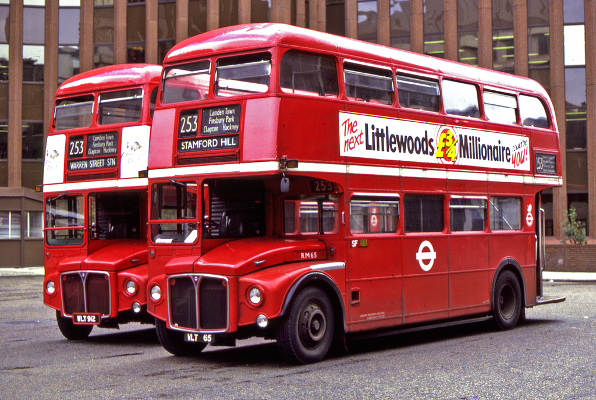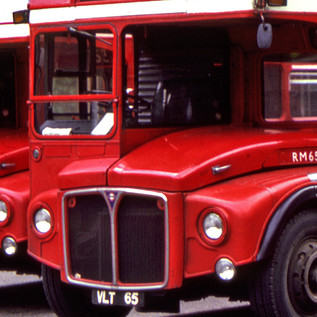There’s been a lot of talk, in academic and government circles, about the effects of advertising junk foods to kids. Many jurisdictions have regulations governing TV advertising, but London, England, is pioneering restrictions in another ubiquitous medium…
 With 8,500 buses like these covering 19,000 stops across Greater London,
With 8,500 buses like these covering 19,000 stops across Greater London,
it’s a fabulous advertising opportunity!
You can’t go anywhere in London without seeing its trademark double-decker buses. According to Wikipedia, the London Bus fleet comprises some 8,500 vehicles navigating 632 different routes, servicing 19,000 stops, and carrying 6 million passengers each weekday. What an advertising opportunity! And the city has done well financially by allowing advertisers to post their signs on its vehicles.
But, now, with the welfare of the children in mind, London City Council has voted to ban Junk Food ads from its buses. It’s an attempt to help curb the scourge of childhood obesity that’s running rampant across the western world. Council acted after a public consultation survey revealed that a whopping 82 percent of those polled supported such a move.
Strong support…
London mayor Sadiq Khan said, in a statement: “It’s clear that advertising plays a huge part in the choices we make, whether we realize it or not, and Londoners have shown overwhelming support for a ban on adverts for junk food and drink on our transport network. It’s completely unacceptable that in a city as prosperous as London, where you live and the amount you earn can have a massive impact on whether you have access to healthy, nutritious food. I’m determined to change this.”
The ban, which comes into effect this coming February 25, includes posters for foods and non-alcoholic drinks high in Fat, Salt and Sugar. That means, no fast Food ads, no sugary Soft Drink ads, no Candy ads, no Baked Goods ads… The list goes on and on.
Huge costs…
Khan says the sacrifice in ad revenues to the city will be minor compared to the effect the ban could have on childhood obesity, which places ‘huge pressure on our already strained health service’.
One snapshot of the statistics tells the grim tale: Khan reports that 40 percent of London kids aged 10-11 are either overweight or obese. And, as we all know, fat kids tend to become fat adults. And that makes them a lifelong burden on the health care system.
Healthy eating advocates thrilled…
Celebrity Chef Jamie Oliver called the ban on Junk Food advertising on transit ‘amazing’.
Chris Askew, Chief Executive of Diabetes UK, told CNN: “Obesity is a crisis that must be tackled on several fronts, but restricting advertisements for these products across the [London Transit] network will help people in London make healthier choices day-to-day.”
My take…
London’s buses are, indeed, a large canvas on which ads for junk food will no longer be painted. And that’s a good thing for that city. But other cities, where the population is less concentrated and which have fewer transit vehicles, wouldn’t benefit as much as London. And that’s most other cities in the UK, at least.
My unscientific survey of local buses here in Canada’s capital reveals that there’s virtually no junk food advertising on their spacious side panels. The ads are mostly for upcoming major entertainment events, real estate developers or agents, and radio stations. I wonder how many other cities are in the same position, with few or no Junk Food ads to ban? And that makes me wonder how much Junk Food advertising London Transit really gets, anyway?
North Americans would benefit more from outright bans on all outdoor advertising of Junk Foods (posters and billboards), and stronger restrictions on all media advertising aimed at kids. And don’t forget the Internet!
~ Maggie J.

